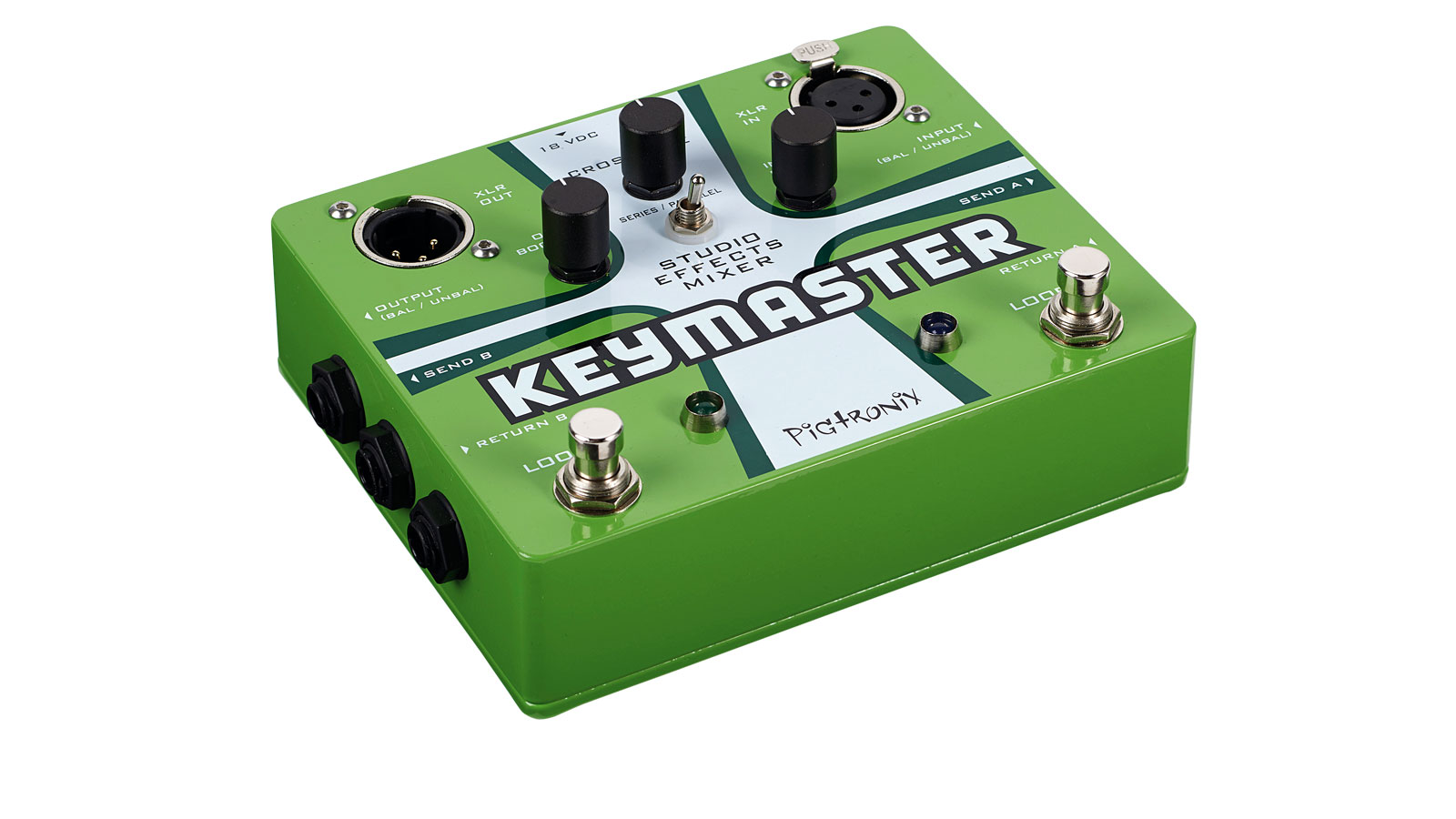MusicRadar Verdict
A flexible tool that has a variety of applications - invaluable in the studio and something that could add real flexibility to your pedalboard.
Pros
- +
A well-through-out utility switching pedal. Excellent build. Wealth of creative options.
Cons
- -
It's a little pricey.
MusicRadar's got your back
The Pigtronix Keymaster is an interface to connect any audio source (instrument, line level, mic) with pedals and return the signal at the correct impedance.
"You can also get creative by running two different dirt pedals in parallel for an interesting blend"
Basically, what you get is a pair of true bypass effects loops, each with its own footswitch, that can be run in series or parallel. In parallel mode, there's the option of crossfading between the two by adding an expression pedal.
On a pedalboard, the most obvious use is to bring in two different groups of pedals at any time.
But you can also get creative by running two different dirt pedals in parallel for an interesting blend, or with one loop muted, utilising a cross-fading expression pedal as a blender to turn up delay, for example.
For recording, the Keymaster is great for re-amping - running the recorded signal out to your pedals and back, or to an amp.
Want all the hottest music and gear news, reviews, deals, features and more, direct to your inbox? Sign up here.
Trevor Curwen has played guitar for several decades – he's also mimed it on the UK's Top of the Pops. Much of his working life, though, has been spent behind the mixing desk, during which time he has built up a solid collection of the guitars, amps and pedals needed to cover just about any studio session. He writes pedal reviews for Guitarist and has contributed to Total Guitar, MusicRadar and Future Music among others.

